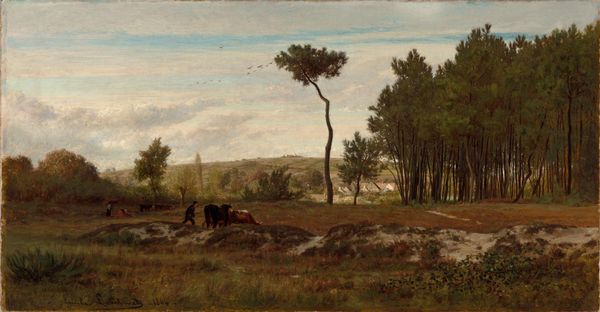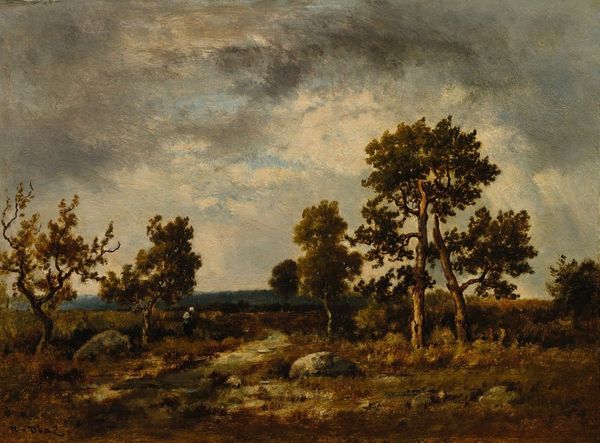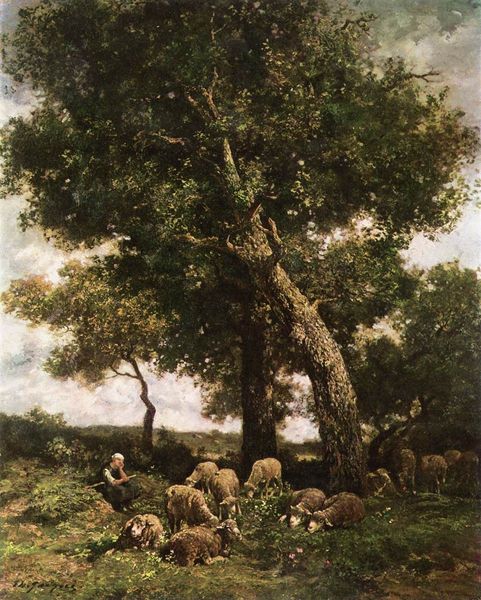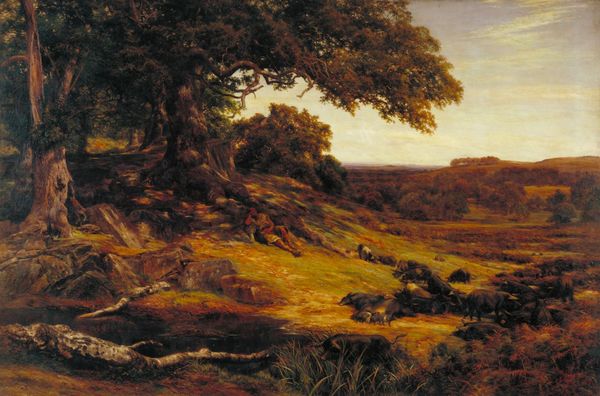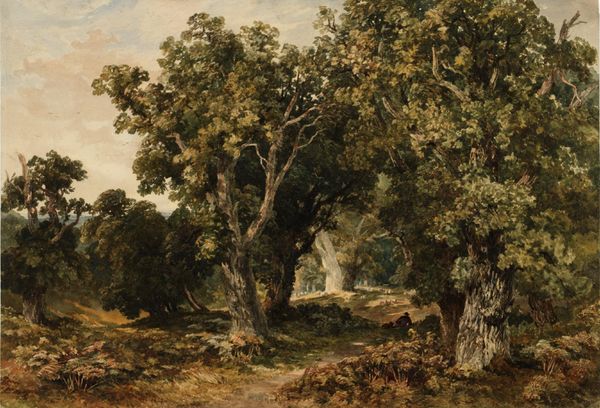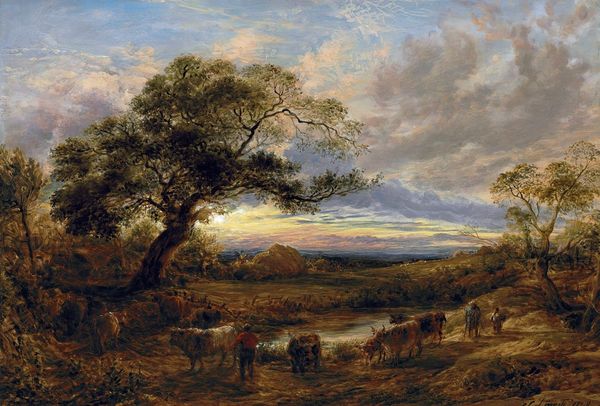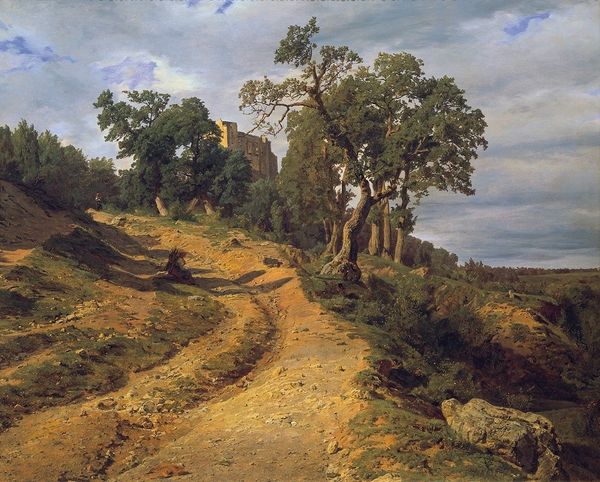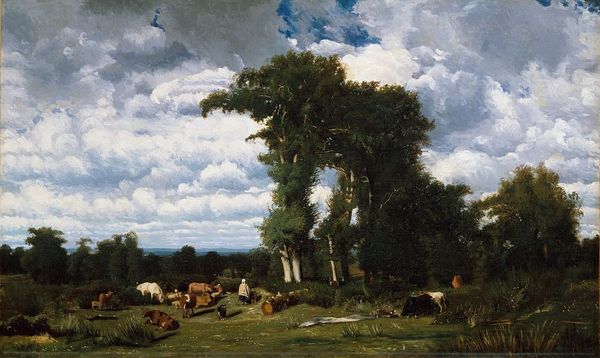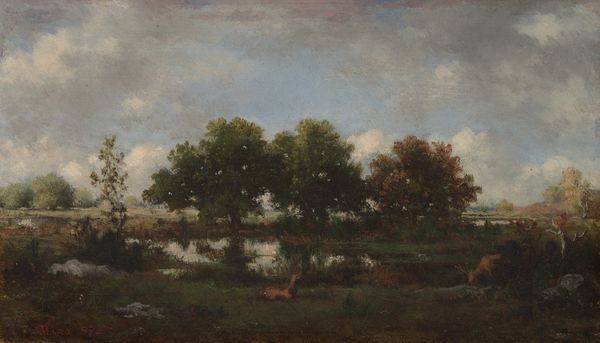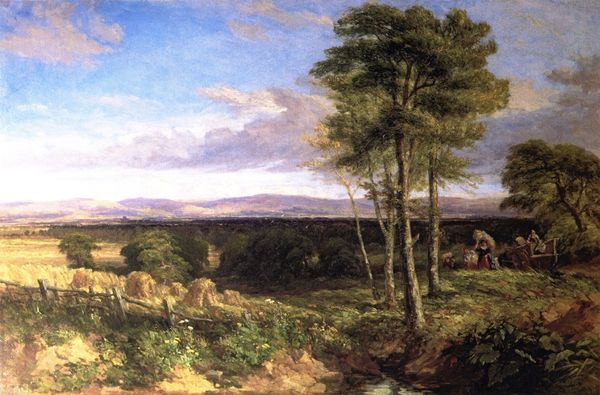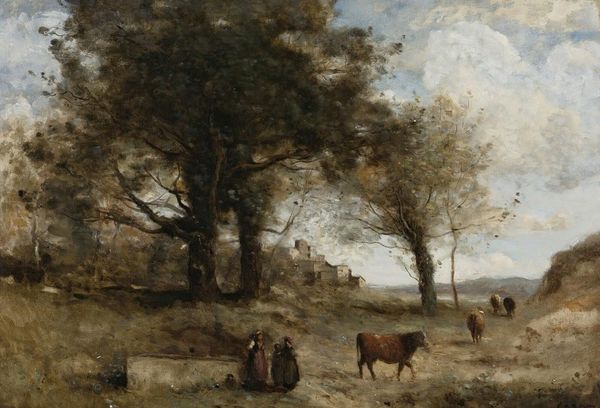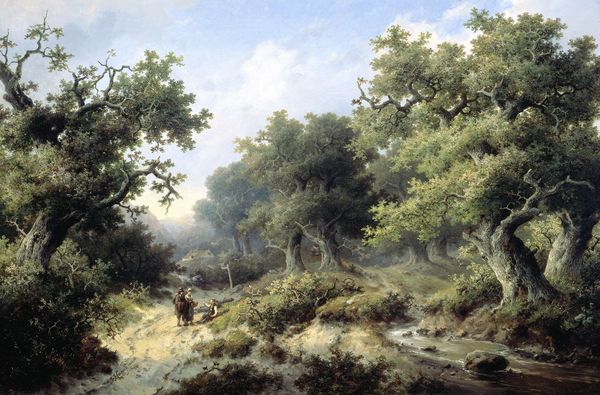
plein-air, oil-paint
#
tree
#
cliff
#
plein-air
#
oil-paint
#
landscape
#
oil painting
#
rock
#
underpainting
#
plant
#
romanticism
#
realism
Copyright: Public domain
Editor: So, here we have "The Raging One," painted by Camille Corot around 1830. It's an oil painting done en plein-air. The landscape feels so vast and yet also very contained, somehow melancholy. What do you see in this piece? Curator: This landscape, rendered during a time of great social upheaval in Europe, offers more than just pastoral beauty. I see Corot engaging with the political and social landscape, even subtly. The solitary figure, dwarfed by the environment, invites questions about agency, class, and belonging in a rapidly changing world. Does this solitary figure belong or are they merely surviving in nature's imposing world? Editor: That's interesting. I hadn’t considered the political climate. So you're saying the size and solitude are significant? Curator: Absolutely. The "raging" title suggests conflict, perhaps reflecting societal tensions simmering beneath the surface of 19th-century France. We could even analyze the gender of this lone figure, or lack thereof, and see if that brings us closer to answering other political tensions that would've been palpable during that period. Consider too the tradition of landscape painting itself – how it often served to idealize and naturalize existing power structures. How is Corot conforming or pushing back against that history here? Editor: So, rather than just a pretty landscape, it is an observation on individual alienation or the potential for uprising? Curator: Precisely. It prompts us to contemplate individual identity in relation to social forces and question who has access to, and the right to depict, such idealized landscapes. By not immediately knowing the subject's identity, is Corot asking if this land, at its rawest form, truly belongs to anyone? Editor: This makes me consider the role of art during times of political strife, not as just aesthetic appreciation, but also historical criticism and insight. Thanks for expanding my understanding of Corot's message. Curator: My pleasure. Viewing art as an active participant in broader social conversations and considering it in relation to identity encourages critical thinking and offers a much more textured experience.
Comments
No comments
Be the first to comment and join the conversation on the ultimate creative platform.
